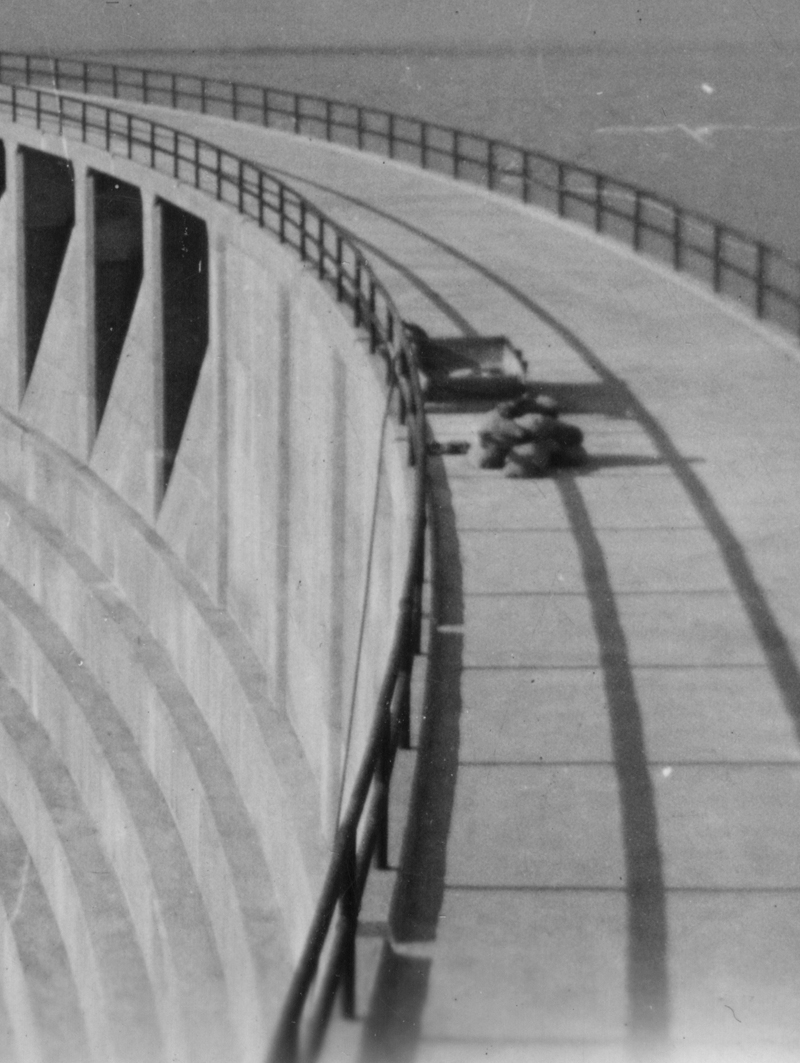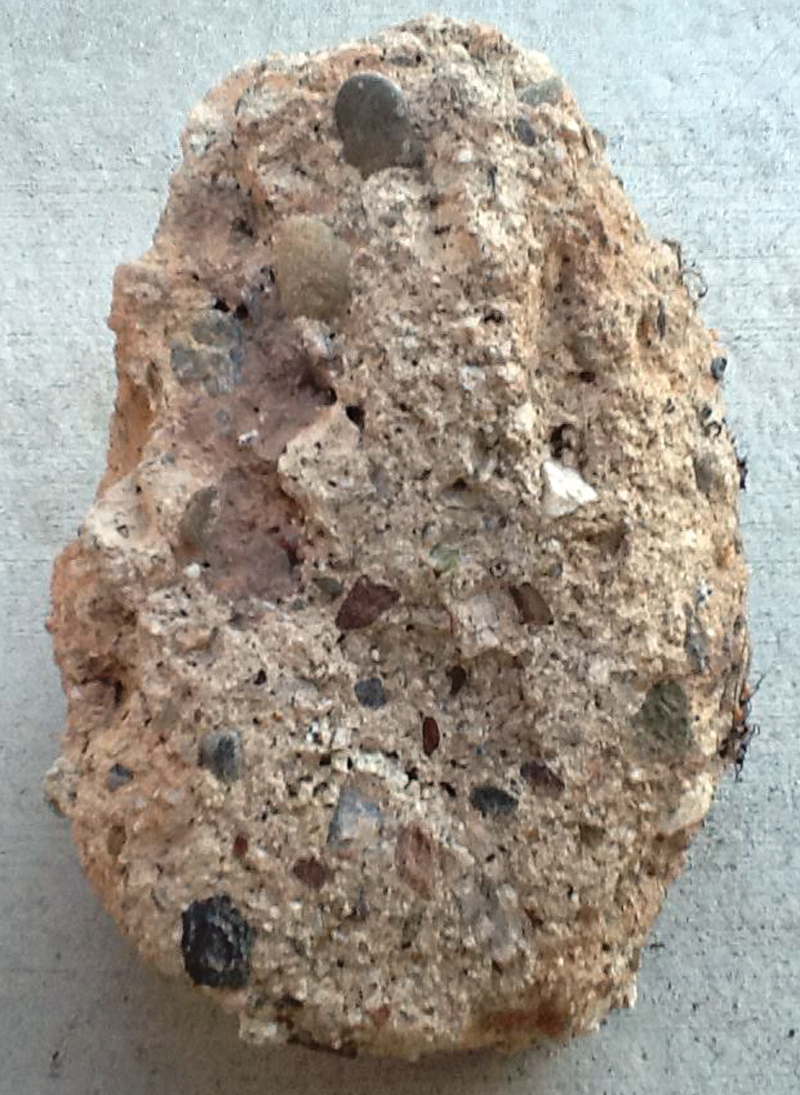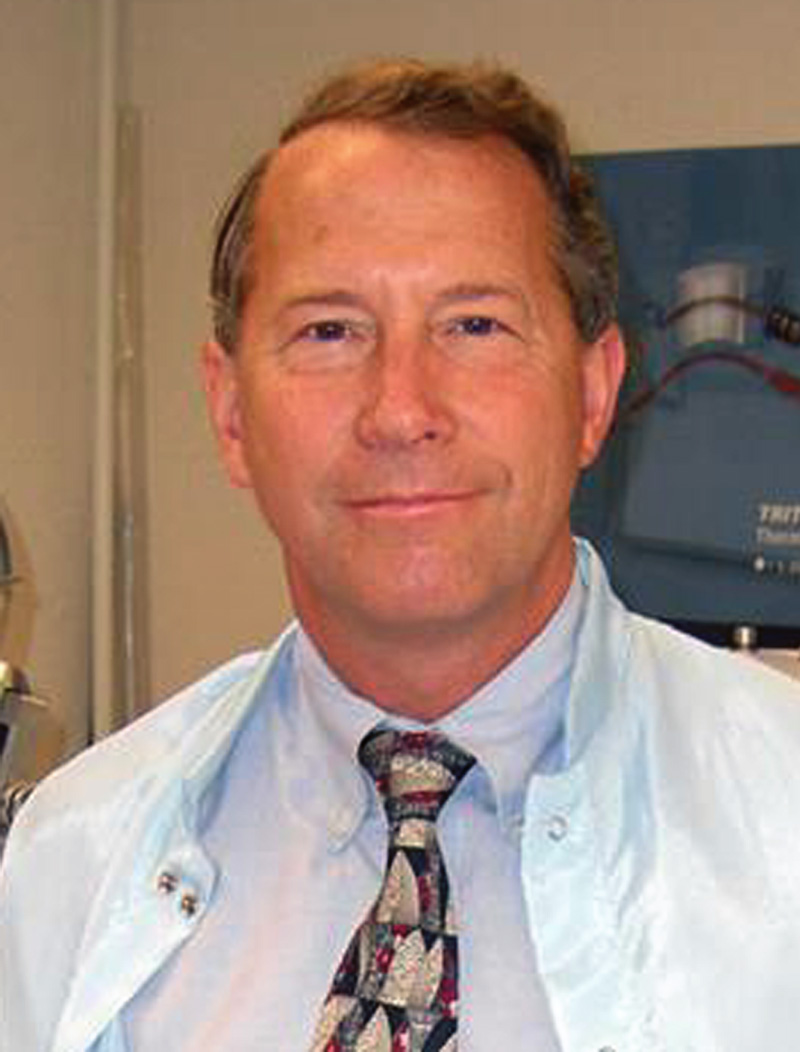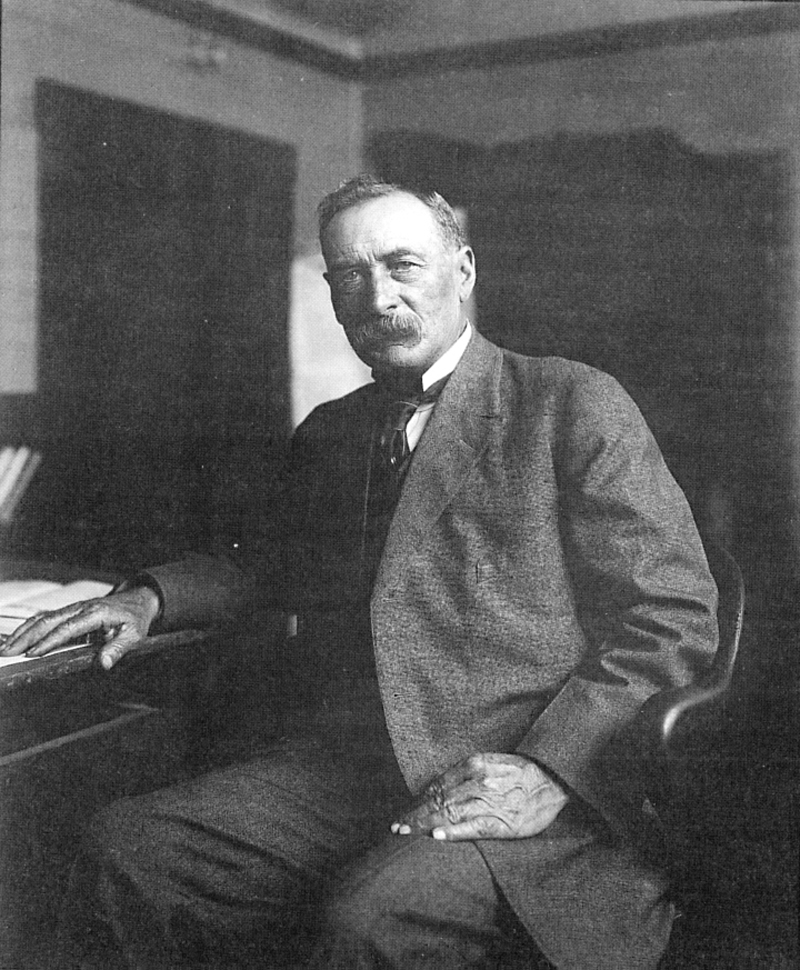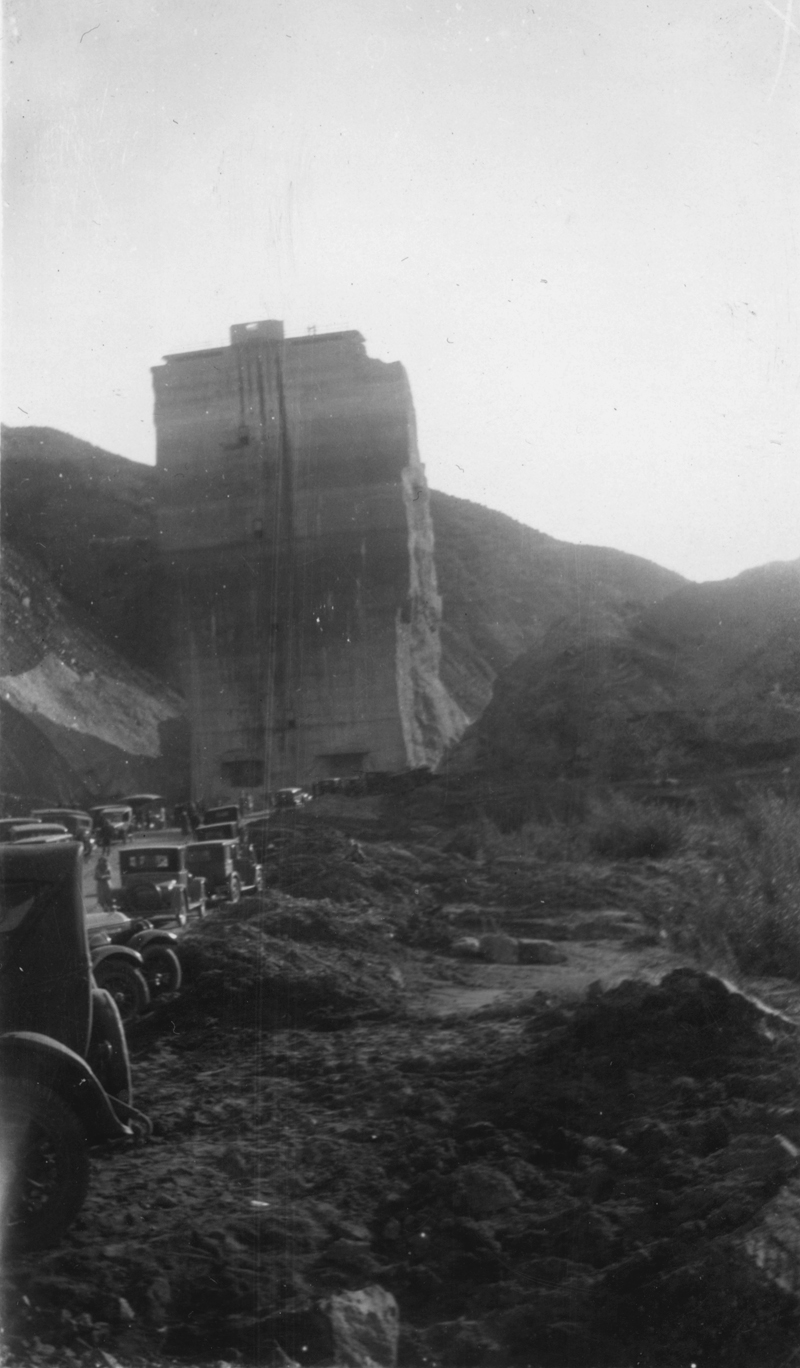|
|
|
Failing St. Francis: Water Pressure or Political Pressure?
Disaster was avoidable if not for the rush to completion, researcher says. By Peggy Kelly Originally published in Santa Paula Times | March 19, 2010 | ||||||
|
In October 2006, a grainy photo surfaced showing a mortar box on top of the St. Francis Dam. Sitting in the mortar box is a half-bag of cement, wooden hoe and the tip of a garden hose, which has been run down the front of the water-filled structure. Hetta Laurena Carter, who took the photo as an 18-year-old enjoying a picnic with friends, said it was what her concrete-contractor father would refer to as "sloppy cement." The workers, said Carter, were attempting to fill a crack in the face of the dam. Historian Keith Buttelman and Leon Worden, then-editor of The Signal newspaper in Santa Clarita, were interviewing Carter on SCVTV. The television show concentrates on the Los Angeles County community of the Santa Clarita Valley (home to the dam), located immediately east of Ventura County's Santa Clara River Valley. Carter said she took the photo in February 1928, just a few weeks before the dam collapse on the night of March 12. It's a believable claim; shown is dam, nearly filled to the brim dam with the waters that later would surge more than 56 miles before spilling into the Pacific Ocean. In 1928, pictures didn't lie. There were no computers or programs to manipulate images, colors, or even add or take away photographed components. Photographs indeed were worth 1,000 words in 1928, not the 1,000 doubts that today's pictorial images can evoke. In the interview, Buttelman noted the general curiosity of the photo and questioned the lack of reference, in the Los Angeles Coroner's disaster inquest, to the repair work it showed. In 2004, about two years prior to Carter's televised interview, Thomas McMullen published his master's thesis, "The St. Francis Dam Collapse and the Impact on the Construction of the Hoover Dam." The work had started as a concentrated study of the Hoover Dam. Before he began his research, McMullen, working toward his master's degree in civil engineering, had never heard of the St. Francis Dam. Obscure references to the disaster in research materials nagged at McMullen and then captured his full attention. He expanded his research, and his thesis became the story of two dams and one man, William Mulholland. Now director of the University of Maryland's College of Computer, Math and Physical Science, McMullen believes not only did the inferior concrete and the do-it-quick-and-cheap construction bring about the disaster, but also that Mulholland suspected early on, at least subliminally, that his dam might be doomed.
When told of Carter's interview and the "sloppy cement" photograph, McMullen didn't hesitate. "That would be the grouting," McMullen said, adding that one would think the repair would have been attempted with a power pump before the dam was filled. "Obviously, with the water, it would lose its ability to set up properly." Mulholland had previously ordered that cracks — which started to appear when the dam was filled to about 60 percent of capacity — be filled with oakum, a tar- and root-based product that is "very good for sealing joints and pipes and then caulk(ing) them," McMullen said. But "this is a difficult fix," McMullen said, "especially when he did not have the ability to lower the level of the dam." "I'm sure Mulholland would have loved" to drain the dam, fix it and then let it refill, he said. McMullen believes Mulholland would have been outwardly confident he could repair the St. Francis. "When Mulholland built the aqueduct, a clog totally inverted the pipe, made it concave. He started adding pressure slowly" and caulked the massive pipe when it was again rounded to relay rushing waters. "He was very good in his own way in coming with devices" to fix problems quickly and cheaply, McMullen said. "I'm sure Mulholland was confident he could fix anything." Oakum is an ancient fix, first used to seal gaps between the planks of a wooden ship's hull. It was a mixture of hemp or jute fibers (think old, unraveled rope) soaked in tar. When stuffed into the gaps, oakum worked well to keep out the water upon which the ship gently floated. But on the face of a dam with pressure from more than 12 billion gallons of water behind it, "There is no way oakum would work," McMullen said. "It was obviously an attempt by Mulholland" to fix the dam by any method. "It's an interesting indication of how Mulholland was trying what is basically a plumbing fix on a dam," he said. "It does show he was concerned. If someone is going out, trying to find ways to fix things totally against the norm, you'll find somebody fairly desperate."
McMullen spent several days at the dam site, now just rubble after the city of Los Angeles and its Department of Water & Power destroyed the so-called "tombstone" in May 1929 — a section of the dam that was left standing when its eastern and western abutments disintegrated. Several months after the disaster, a youth had fallen from the tombstone, dying on impact at the inadequate toe of the dam, 195 feet below. "I think the blowing up of the dam" and the jackhammering of remnants strewn through the canyon "was interesting," McMullen said. "The city didn't want any publicity, didn't want anyone to bring it up again. It was in their best interest" to bury the true story of the St. Francis Dam Disaster and forget it ever happened. McMullen said he gained much knowledge from writing his thesis. He read about the circa-1910 Olive Bridge Dam, which was built to the highest standards. Some defenders of Mulholland claimed it didn't exist at the time the St. Francis was planned. Some have even claimed Mulholland didn't know the concrete would have to be cured and cooled down, since the material was naturally hot during August pours. "It's incomprehensible to me that Mulholland wouldn't know," McMullen said. "I'm sure he had knowledge of heat generation." But he's also certain Mulholland didn't consider that the thick, uneven pours, lacking concentration joints and grouting, would prove catastrophic. "There was no consistency" to the materials, sections or pours, McMullen said — and perhaps not even to the reasoning — that created the St. Francis Dam. McMullen believes Mulholland and the Department of Water & Power could have been found criminally negligent for the construction of the St. Francis Dam, which was undertaken in secret and completed at record speed, due to fears that the water supply to Los Angeles could be disrupted by the failure of the aqueduct, — the apex of the self-taught engineer's career. The fear of failure stemmed from sabotage by Owens Valley farmers, whose own water supply was drained when the aqueduct started to flow in 1913. By 1928, Owens Lake was dry, its consistency much like the talcum-powder feel of the concrete remnants of the St. Francis Dam. Generations later, it's still a disgraceful chapter in the City of Angels' history. When it comes to the St. Francis Dam Disaster, Mulholland took the fall for the city that spent generations thereafter defending him ... and themselves.
The man was an anomaly. "Mulholland had that incredible idea for the aqueduct pipe, and not only did he save money, but he got it going again in weeks instead of a year. It's that Peter Principle," McMullen said. "I'm not saying he was incompetent, but there was no way out of his problem (with the dam)." McMullen remains surprised at the construction level of the St. Francis Dam and dismisses many of the stated excuses for its collapse. Hoover Dam, also built in a remote location, still has cooling pipes in place curing the concrete. "This was not a century later; this was merely a decade later," when Mulholland did not allow the inferior concrete of the St. Francis even to set up. But with the St. Francis Dam, "I assume, since there was no real budget and they wanted the dam built as cheaply as possible, and they were just dredging the creeks with no plan, they weren't worried about the size of the aggregate. And you just can't take these things out of a streambed for construction use. They didn't have the ability to sort it on site, and there was no concrete plant" in the canyon. "Those things were so glaringly missing that you have to blame the person building the dam," McMullen said, "and of course Mulholland took responsibility for it" to save face — and the pocketbook and perhaps the prosecution — of the Department of Water & Power. While an obviously grief-stricken Mulholland told the coroner's inquest he would take the blame, during this same testimony, and later, he darkly referred to unspecified aspects of "hoodoo" concerning the St. Francis Dam Disaster. Was it bad luck? Evil Owens Valley ranchers? Or Mulholland's water and power bosses? McMullen believes the latter are ultimately responsible for the collapse of the St. Francis Dam. "It just wasn't Mulholland. They didn't allow him to spend the time or allow him the resources. ... It would have been very expensive, though," to build it right.
The St. Francis Dam Disaster could have been avoided. "First of all, if they had spent the money for the proper process," McMullen said, it would have been discovered that the location was far from the perfect. In fact, in a much earlier report, Mulholland himself noted that San Francisquito Canyon was not desirable for dam construction. But later, Los Angeles acquired the location, and that was that. McMullen believes even with a landslide — and one must ponder whether the dam's collapse triggered a slide, rather than the other way around — if the quality of concrete and the work itself had been better, there might have been no such sudden disaster. "The dam was just so filled with fractures, it just broke apart. It was a catastrophic flood. If the concrete had been of better quality, in my opinion it would not have fallen apart as it did," McMullen said. "I did think about whether or not the dam would have collapsed at all if the quality of the concrete and the work was better," he added. According to an April 1929 article in Newhall Signal & Saugus Enterprise, a huge pit was being excavated for the final resting place of the tombstone, that towering, 195-foot reminder of the disaster, once the carefully placed dynamite was ignited. They needn't have bothered. When in May the prep work was done and the charge fired, "there was a dull report, the big mass quivered, rose slightly, and sunk into a mass of small fragments right where it stood." Although unstated in the Newhall Signal, the destruction of the tombstone must have startled onlookers as much as it is startling to consider today. The incident led The Signal to speculate that rumors about flaws in the concrete of the great dam — which surfaced even during construction — had to be true. Among those killed in the disaster were half the student body of Saugus School, and the hometown Signal thundered that after the tombstone nearly pulverized itself (with encouragement from dynamite charges), "only a pile of concrete marks the spot of one of the most disgraceful fiascoes of modern engineering." Mulholland's strongest champion, the Los Angeles Times — whose owner Harry Chandler had been made even richer by the water that the aqueduct supplied, making possible his development of the San Fernando Valley — had a different take. The dynamited tombstone "tipped" into the pit, according to one of three subtitles in the Times' story, the "wrecking begun by nature" (reinforcing the long-held, no-human-involved "landslide" theory) being "finished by man." More than 80 years later, McMullen said it is "incredible but true that most people don't know about (the disaster), but it's a tribute to the civic leaders who dynamited the dam," annihilating any concrete evidence of its existence or failure.
The story of the St. Francis Dam Disaster was soon forgotten, the tragedy suppressed by those who would prefer that others didn't remember what was probably a criminal act that resulted in the deaths of hundreds, and perhaps 1,000 or more, and swept incomprehensible damage and misery throughout the Santa Clara River Valley. To this day, some refuse to link Mulholland and "failure" in the same sentence, even if just speculatively. "But you have to learn from the past," said McMullen who, when he searched for the dam site, saw a teenager riding a bicycle and asked him where the St. Francis was. "I was about two miles away from the dam site, and this boy said he had no idea what I was talking about. I was shocked that he didn't know about it, that people didn't know about it." Eighty-two years later, remnants of the St. Francis Dam Disaster are hard to find. Fragments of its 175,000 cubic yards of concrete now rest along the streambed, are nestled beneath dirt, or are hidden among thick brush — wrecking begun by man, finished by nature. After completing his research and thesis, which included a dismal report on the quality of blind-tested dam concrete, McMullen found that ultimately, he felt for Mulholland. "When he realized there was a problem, he was stuck between a rock and a hard place. It was a planning error, a construction error" overlooked, never reported to, or outright dismissed by his employers, who were desperate for an alternate source of water. "You have to blame them more than Mulholland. They blessed everything he did. And when it got to the point where he said, 'What can I do?' he did the best he could — and it still went to hell." "That," McMullen said, "is the shame of it."
Peggy Kelly of Santa Paula is an award-winning freelance writer, humorist and sought-after Master of Ceremonies. In 2018 she became the owner of the Santa Paula Times newspaper. The working title of Peggy's forthcoming book is "Thornton's Wild Ride! The True, Untold and Unbelievable Story of the Hero of the St. Francis Dam Disaster." |
1) St. Francis Dam: Forgotten, With Purpose 2) Reopening the Books on the St. Francis Dam Disaster 3) St. Francis Dam Construction Records Missing 4) Dam Disaster Whitewash Preserves Mulholland Legend 5) Failing St. Francis: Water Pressure or Political Pressure? • Thornton Edwards, Hero of the St. Francis Dam Disaster
|
The site owner makes no assertions as to ownership of any original copyrights to digitized images. However, these images are intended for Personal or Research use only. Any other kind of use, including but not limited to commercial or scholarly publication in any medium or format, public exhibition, or use online or in a web site, may be subject to additional restrictions including but not limited to the copyrights held by parties other than the site owner. USERS ARE SOLELY RESPONSIBLE for determining the existence of such rights and for obtaining any permissions and/or paying associated fees necessary for the proposed use.
